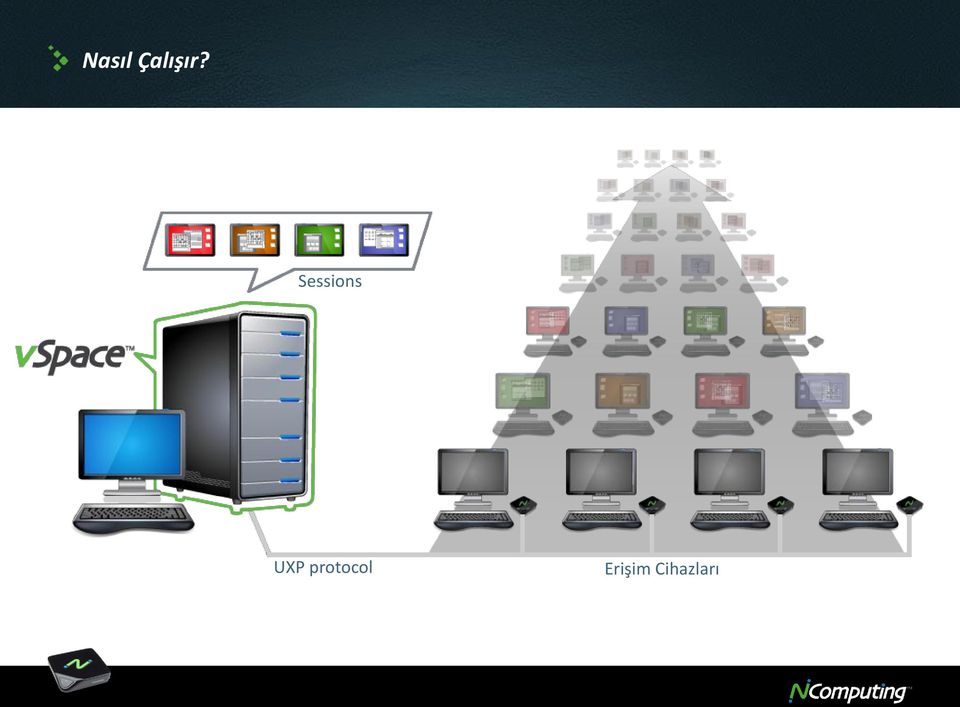Ncomputing Vspace For Windows 7server6 6 9 1 Zip2812486

Created 6/17/11 Windows Tuning Guide for vSpace 6Configuration Recommendations for Windows IntroductionNComputing products are designed to extend standard desktop PCs and lower the average cost of computing in almost any environment. However, the default configurations on many systems are not optimized for this sort of multi-user environment. This document is designed to help you streamline your host PC and operating system to bring about the best performance and compatibility possible. It contains a variety of minor tweaks and advanced configurations that will help you get the most out of your NComputing deployment. Table of ContentsIntroduction........ 1 Windows Tuning........
2 Compatibility........ 2 Windows User Profiles....... 2 Remote User Configuration......
Ncomputing Vspace For Windows 7 Server 6 6 9 1 Zip. 2/7/2018 0 Comments Embed VSpace Server 6.6.9.1 Release Notes. • vSpace L-6.6.9.1 Release Notes March 25, 2013.

2 Data Execution Prevention...... 3 Enable Windows 7 Themes......
Tancuyuschij medvedj dlya winamp. • Dubfunk 38 • Steve Mill 8 • Kosmas Epsilon 7 • Torro Remote 7 • Disoul 7 • Dibby Dougherty 6 • Tim Davison 5 • Cid Inc.
3 Remove IE Enhanced Security Module..... 3 Disable CD-ROM Auto play (At the Administrators discretion)...
3 Disable UAC (User Account Controls)..... 4 Disable First Run Page in Internet Explorer.... 4 Disable Winlogon Timeout...... 4 Performance........ 4 Windows Performance Options...... 4 OS Power Settings.......
5 Disable Excess Processes...... 5 Force Off-Screen Compositing (IE 8 Only)..... 5 Enable Software Rendering in Internet Explorer 9.... 6 WINDOWS TUNING GUIDEWINDOWS CONFIGURATION RECOMMENDATIONS SMB and Explorer Traffic Optimization..... 6 Scheduled Host Reboot....... 6 NComputing Tweaks....... 7 vSpace Installation.......
7 vSpace Registration....... 7 L-Series Firmware Updates...... 7 L300 Firmware Password...... 7 Server Roll-over Configuration...... 7 Assorted Console Tweaks......
7 Auto Login on the Host....... 8 Exclude a Program from Hardware Acceleration.... 8 Video Acceleration Scroll Protection.....
8 Summary........ 9 Windows TuningThese configurations are designed to optimize the Windows operating system itself. They are broken down into Compatibility Tweaks and Performance Tweaks. CompatibilityWindows User ProfilesBoth local and domain user accounts can be accessed through an NComputing terminal, as is the case with a standalone PC. These are standard Windows accounts and are created and managed through Windows in the same way you would any other user account. User accounts accessed through an NComputing terminal will retain their folder access settings, drive mapping, and group policies.
It should be noted, however, that users on NComputing Virtual Desktop Devices are treated as Remote users for the purpose of some settings and policies. Remote User ConfigurationBy default, Windows only allows Terminal Services (TS) or Remote Desktop Services (RDS) logins for Administrators and Remote Desktop Users. In order for Users to be able to log into the host they will need to be a member of the Remote Desktop User Group. For assistance with 2 WINDOWS TUNING GUIDEWINDOWS CONFIGURATION RECOMMENDATIONS configuring this please refer to our Knowledge Base article Data Execution PreventionTo help ensure NComputings services are able to run properly, Data Execution Prevention (DEP) should be set to Essential Windows programs and services only. To make this configuration, right-click My Computer and go to Properties > Advanced system settings > Performance Settings > Data Execution Prevention (tab). Enable Windows 7 ThemesFirst, install Desktop Experience in Windows Server 2008 R2: 1. Launch Server Manager and click on Features 2.
In the Features Summary section, click Add Features. Select the Desktop Experience check box. If you are prompted to install additional features, click Add Required Features, and then click Next.
Click Install. When the installation completes, you may be required to restart your computer. Next, enable the Themes service: 1. Click Start > Control Panel > Administrative Tools > Services. Click Themes.